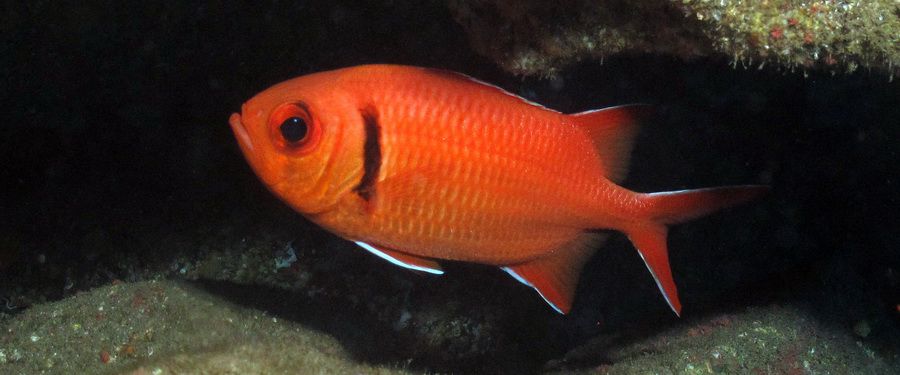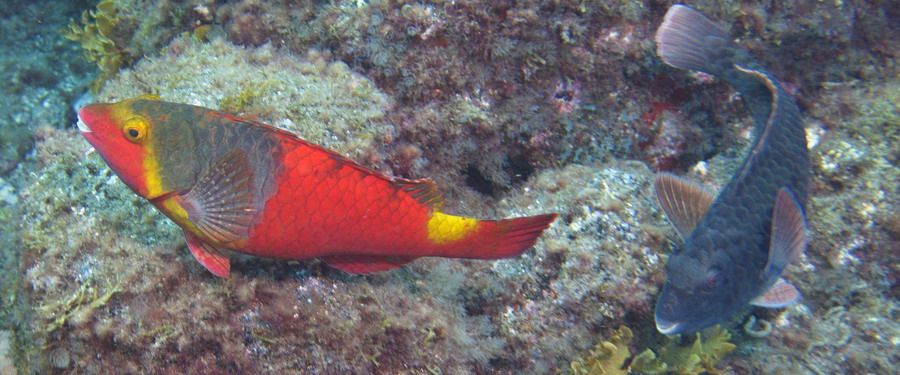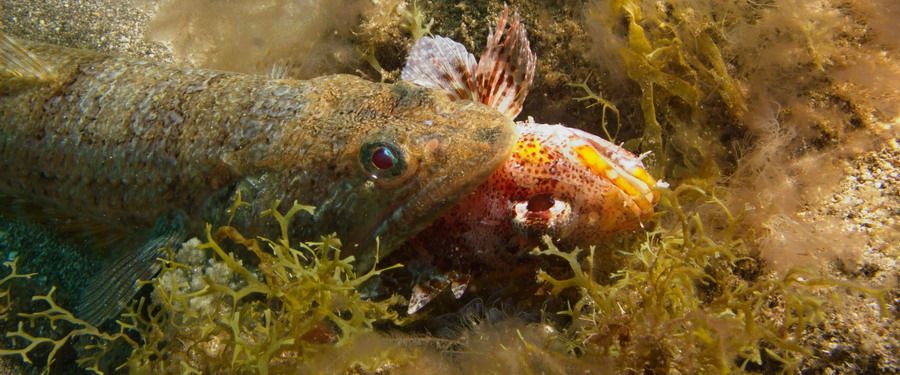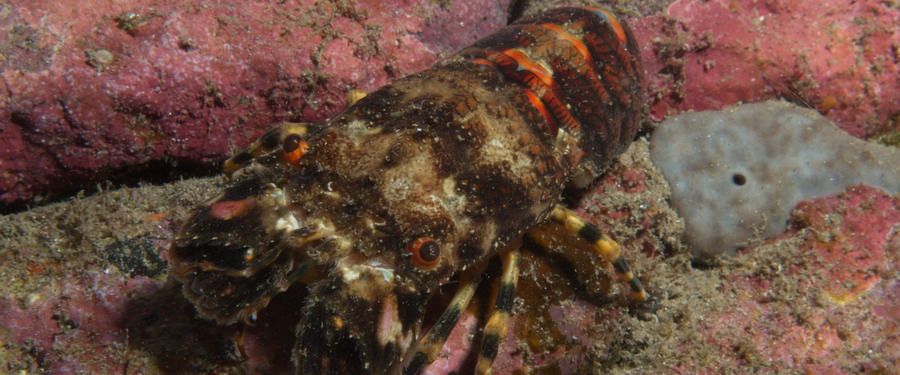
When you come to the Canaries to dive, you expect to see lots of marine life, but are there Birds or Animals that live under the sea? Sadly the Monk seals have been almost exterminated from the Canaries, and the marine mammals (whales and dolphins) are too far off-shore to dive with. If you are really lucky you may find a turtle, but encounters are rarely guaranteed.

However, you can still look for tigers, zebras, leopards and several other birds and animals underwater – as there are many fish species that share their name with creatures we normally think of being above water! So yes we have tigers (Tiger morays – Enchelycore anatina), lizards (lizardfish – Synodus synodus), and squirrels (Black-bar squirrelfish – Myripristis jacobus). The birds are represented by parrots (Parrotfish – Sparisoma cretense) and eagles (eagle ray – Myliobatis aquila) while the insect kingdom has given us locusts, scorpions and bumblebees – the locust lobster (Scyllarus arctus) , scorpionfish ( Scorpaena maderensis) and spotted bumblebee shrimp (Gnathophyllum elegans).
So to help you see the ‘birds and animals’ that we find underwater, here are some photos and details, so that the next time you dive in the Arinaga marine reserve you will know where to look for the fish with animal names.
Tigers

Was the Tiger moray named after the spotted colouring on its body, or after it’s ferocious set of teeth? Either way this is always a ‘good spot’ because of its menacing appearance and bright colours. During the day you have to look into cracks and crevices or under big rocks to find them. At night they come out to hunt and you can encounter them in all parts of the Arinaga marine reserve.
Leopards

There are actually two species named after leopards, and both are quite difficult to find as there are few individuals. First is the nudibranch ‘Leopard Sea Slug’ which can grow up to 10cm long. They feed on sponges so look on walls where there is abundant sponge growth. They are usually solitary but can sometimes be found in pairs.
Secondly we have the leopard spotted goby, about the same size. To find these you either need to look in the back of caves or search for them at night.

Zebras and Horses

You can see why this bream got it’s name! You will find them in most of the main diving areas, especially the Table Top, punta de los Sargos, and punta de la Monja. They can grow up to 55 cm in length making them one of the biggest bream in the Arinaga area.

On the other hand, finding seahorses is much more difficult. Their small size and camouflage colours make them very difficult to spot. They usually live in the sea-grass, but may be found in a few special places with a bit of luck and a lot of searching!
Squirrels and Hogs

These are very rare in the Canaries as they are normally found either in the Carribean or on the West African coast. They tend to mix with Glass-eyes, as they are almost the same shape, and odd individuals can be seen in the Arinaga marine reserve. Look for them at the back of caves or under overhangs.

The female Barred Hogfish (above) is one of the most colourful fish in the Canary Islands. In the past it was also a prize target for spear fishing. Today spear fishing is not allowed in the marine reserve in Arinaga, and a small number of these shy individuals have returned. You need to watch carefully as they can easily be mistaken for a parrotfish.
Birds

The female parrotfish has probably the most striking colours in the Canaries and is a ‘signature’ fish for a Canary dive. However many divers do not realise that these females all change sex half way through their life, lose all their colour and become old grey males! We sometimes see the males fighting among each other to control the harem!

Look for the Eagle ray over the sandy areas, where it digs in the sand to find small molluscs, crustaceans and worms. When seen from below they look like a big white owl coming towards you. This species is very similar to the Bull ray, which has a much larger head, stripes across the back and longer tail.
Reptiles, Spiders and Insects
Other species in the Canaries who have re-used terrestrial names include the Frogfish, Sea Hares, Arrowhead Spider Crab, the Crocodile sand eel, Great Spider Crab, Snakelocks anemone and Jaguar round crab. To complete our selection today we have a reptile, and four insects.

Often well concealed or hidden in the sand, lizardfish are common throughout the Canary Islands. They have the ability to open their jaws 180º, and can sometimes be found with prey half-in and half-out of their mouths.

The spiny butterfly ray is one of the biggest rays in the Canary Islands by wing span. look for them in sandy areas where they sleep during the day, usually close to rocks. Just like butterflies it has a big wingspan, but the body area appears to be small, and the tail is very short.

This is the smallest of three Scorpionfish, and has a series of poison spines, but is still pursued by trumpetfish, lizardfish (see above) and bigger bream such as sama. Look for them on rocky areas, in cracks and close to rocks. Once you start to find them you will see they have a wide distribution.

These look at first as if they are immature cape lobsters, but are a completely different species and only grow to about 15cm max. They are called ‘locust’ because they jump several metres if discovered by a predator such as octopus. They are normally nocturnal but in one or two places have been seen during the day as well.

This tiny little shrimp is another nocturnal species, just slightly bigger than a bumblebee. Look for them on walls and in cracks during night dives.
Did you enjoy the selection of ‘animals’ that you can see in the waters surrounding the Canary Islands? It will be our pleasure to show you some of them the next time you visit Gran Canaria.
Author – Brian Goldthorpe is a BSAC Advanced Instructor and a PADI Master Scuba Diver Trainer with ‘Elite’ status. He has been diving in the Canary Islands since 2002 where he runs a scuba diving centre in Gran Canaria – Davy Jones Diving , where he shows guests around the El Cabrón Marine Reserve, just outside the town of Arinaga.
